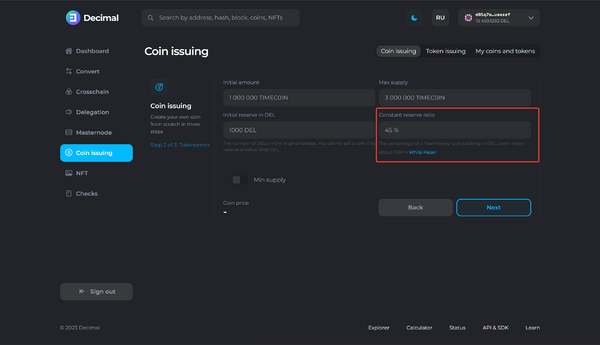Instruction:Defining CRR when creating a coin
| This is a page with the instruction guide to the Decimal Console. |
Main article: CRR
The Constant Reserve Ratio (CRR) is used in the second step (Tokenomics) when creating a coin:

Defining CRR when creating a coin
When creating a coin in DecimalChain, defining the CRR (Constant Reserve Ratio) plays an important role. CRR determines the percentage of reserve that will be reserved in the base coin, DEL, for each issued custom coin.
Steps to define CRR when creating a coin:
1. Determine the desired liquidity level: Decide how stable you want to make your coin. You can choose a CRR ranging from 10% to 100%.
2. Consider volatility: Take into account that a higher reserve percentage (higher CRR) will reduce the volatility of the coin, while a lower reserve percentage (lower CRR) will result in higher volatility.
3. Make a decision: Determine the percentage of reserve you want to allocate for your custom coin. This will be your CRR.
4. Deploy the coin: After defining the CRR, you can launch your coin on the DecimalChain network with the specified reserve level.
![]() Remember that CRR is an important parameter that determines the liquidity and volatility of your coin in the DecimalChain network.
Remember that CRR is an important parameter that determines the liquidity and volatility of your coin in the DecimalChain network.